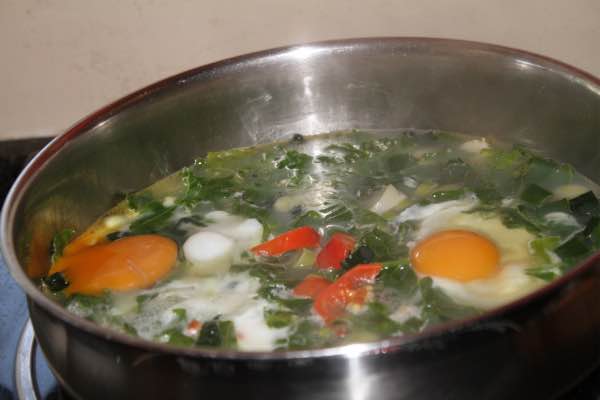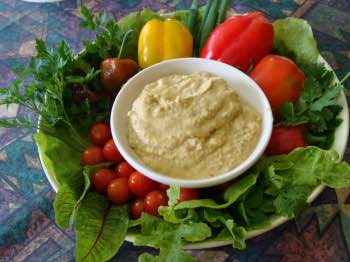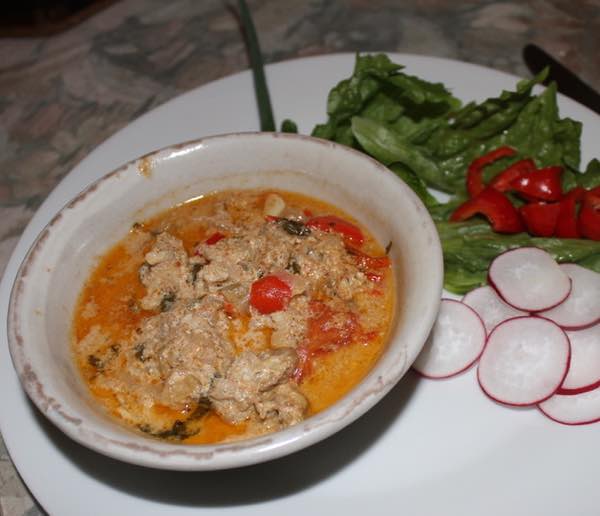- Homepage
- Easy LUNCH
- Homocysteine and Hip Fracture
Homocysteine and hip fracture
Elevated homocysteine and hip fracture are closely correlated. For men the risk is four-times; and nearly double for the ladies.
I first came into contact with this dilemma some 30 years ago when attending a lecture by a prominent researcher. He was asked to investigate why sheep brought in from the Karoo to a feedlot in the Western-Cape were fracturing their forelimbs; and walking about on their elbows, so to speak.
On examining their bones he was astonished to discover the calcium-content was high but they were extremely brittle. He went on to research their diet, finding that a Karoo lamb would be eating about 9 percent protein; but when confined in a feedlot it had been artificially raised to over 35%.
Obviously they got a lot less exercise too; couch-potatoes, so to speak.

This page was last updated by Bernard Preston on 4th January, 2026.
Homocysteine
Homocysteine is a toxic breakdown product during the metabolism of the amino-acid called methionine.
Under normal circumstances, in the presence of certain important minerals and vitamins it is immediately deactivated into Glutathione and SAMe.
However if the levels of zinc and the B vitamins riboflavin, pyridoxine or folate are low, the enzymes are unable to do their work with a consequent rise of this toxic amino-acid intermediate in the blood.
Methionine is an essential amino acid; we cannot survive without it from our food. Those eating meat have no worries but vegetarians often get it from sesame-seeds ground into a paste called tahini; and eggs too.
Commenting in the longevity diet researchers make the point that we need low but adequate amounts of protein; too much methionine isn't good either. It is recommended that only children and the elderly have more.
Researchers report that poor renal-function is another cause of raised homocysteine and the associated risk of hip fracture[1]. That means that prediabetics need to take note; the kidneys take strain if we have chronically raised blood glucose.
Homocysteine and hip fracture
The correlation between homocysteine and hip fracture can be easily modified by simple
dietary interventions according to researchers reporting in the influential New
England Journal of Medicine[2].
The alternative is not only osteoporosis with an increased risk of hip fracture but also cardiovascular disease, substantial disability and high medical costs; and even death.
It is their opinion that raised homocysteine interferes with cross-linking in the collagen that forms the substrate of bony tissue, thus weakening the structure and greatly increasing the risk of a break; despite adequate calcium.
Zinc
Zinc is a vitally important mineral for optimal wellness and prevention of a hip fracture. It is known to be a cofactor in over 300 enzymatic reactions, only one of which is breaking down homocysteine; a deficiency thus has far-reaching consequences in widely diverse parts of the body.
Best sources of zinc
- Grass-fed beef
- Spinach
- Asparagus
- Oats
- Mushrooms
- Lamb
- Sesame seeds
- Pumpkin seeds
- Chickpeas
- Lentils
- Green peas
- Wheat bran
We need to aim for at least 11mg per day. It should be easily attainable for both meat-lovers and vegetarians; but it's not.
A typical three-ounce helping of beef from cattle raised on pastures, the size of the palm of your hand contains about 3mg or a quarter of your daily need of zinc.
However corn-fed cattle have only a quarter of the zinc compared to those raised on pastures. Even foods such as tomatoes, squash and broccoli should have plenty of the mineral but remember it is dependent on the soil the plants are grown in; and some may be lost in the cooking.
In short if you are eating from a wide-range of foods you will probably be getting enough zinc. But the population at large on the modern "industrial diet" as it is being called is often deficient; raised homocysteine and hip fracture.
Be more than happy to pay extra for free-range beef, pork and chicken; and organic vegetables grown on compost. They are a lot cheaper than the cost of a hip replacement, not to mention the pain, suffering and disability. 50% of those having a fracture will die within one year.
Vitamin B2, or riboflavin
Vitamin B2 is also required for the breakdown of homocysteine to prevent hip fractures; it is involved in many other pathways in the body too. For example, it is very necessary for energy production, absorption of iron and the synthesis of antioxidants like glutathione, mentioned above.
Good sources are your greens like spinach, legumes and dairy products; chicken and eggs too. In short, provided we are eating from a wide range of foods we need have no fear of a deficiency of B2.
Wheat bran also contains large amounts of B2, about 0.5mg per 100 grams but 90% is extracted in milling and sent for animal feed[4].
Eggs Hilton for breakfast, this divine green salad for lunch and butter chicken curry for dinner would see you home.
But a meat and potatoes man would certainly be deficient with risk of hip fracture and homocysteine cardiovascular disease too.

Vitamin B6, or pyridoxine
Pyridoxine is another of the vitamins absolutely essential for the breakdown of homocysteine and the prevention of hip fracture, cardiovascular disease and neurodegenerative conditions like Alzheimer's.
This is a subject on which the last word is yet to be written. Many folk who are eating the required daily amount of 1.7 milligrams still have very low plasma levels; and are thus susceptible to raised homocysteine and hip fracture. A deficiency will also make you anaemic as vitamin B6 is central to the manufacture of haemoglobin.
 Butter chicken and salads
Butter chicken and saladsFish, poultry and pork are all good sources; as are sweet potatoes and unrefined grains such as brown rice and our 100% wholemeal bread. Avocados and dark-green leafy vegetables like spinach again are other simple ways to increase your pyridoxine without having to take a supplement.
Taking supplements of over 50mg of pyridoxine is one of the causes of a peripheral neuropathy; numbness and sometimes weakness in the lower legs[6].
Grass-fed beef is also good.
Because so many people have low plasma levels of vitamin B6 we recommend you overemphasize these coloured foods. Those on the black and white diet are certainly going to be deficient.
Again a wide range of foods will keep you covered. Just feedlot meat and potatoes from cold storage are not sufficient.
It is my understanding that this paradox of seemingly sufficient in the diet, yet low plasma levels can in part be explained by the fact that there are eight different forms of pyridoxine; it is in reality a family of vitamins and each member is important in its own right. They are found in widely divergent foods and have many dissimilar functions.
Read more about this complex subject at frailty and vitamin B6. The trick is not to get neurotic about whether you have had sufficient pyridoxine-glucoside today; you would go mad but rather to enjoy a wide range of foods.
One of the problems with supplements is that most likely they contain just one of these forms of vitamin B6. Solgar for example, a popular brand contains only pyridoxine HCl. What about the other seven?
Vitamin B9, or folate
Folate is the last of the vitamins we will be discussing in relation to homocysteine and hip fracture. However it has far-reaching benefits into many other areas of the body too, notably prevention of neural tube defects like cleft palate and spina bifida; and the formation of healthy red blood cells.
The richest sources are your legumes like lentils and chickpeas; and the dark-green leafy vegetables such as broccoli, spinach and kale.
There are many different forms of folate so to get an adequate amount we need again to be enjoying a wide range of foods.
Our authentic hummus recipe enjoyed liberally on a green salad will take you a long way home.
Wheat bran
Wheat bran makes up about 15 percent of the whole grain. Most is removed in the milling process and 90% goes to animal feed; only the food snobs[5] actively search for unrefined flour.
Bran contains the following amounts per 100 grams.
- 1000 mg of magnesium
- 15 mg of zinc
- 0.5 mg riboflavin (B2)
- 0.8 mg pyridoxine (B6)
- 0.5 mg folate (B9).
Using 100% real flour when baking bread contributes an enormous quantity of the nutrients required to break down homocysteine and help prevent hip fractures.
The bran is also where very important phytonutrients called lignans are found; they help prevent serious conditions like breast tumours, prostate cancer and cardiovascular disease.
This blog entitled what are lignans discusses this complex subject in layman's terms.
"Super foods offer high levels of desirable compounds and are linked to the prevention of a disease; or are believed to offer several simultaneous health benefits beyond their nutritional value.”
The elderly are vulnerable
Often when a loved one has passed on, the surviving spouse could not be bothered to cook for him or herself. This is when they are particularly likely to become deficient in one or more of these vitamins and minerals that are so important in the prevention of a devastating hip fracture.
Simple balancing exercises done daily also help to prevent a fall; see newsletter #53 for more specifics[3].
Take-home
The take-home from all of this complex science is that the elderly in particular need to be eating more greens and whole grains; and in fact a wide range of coloured foods.
Adding to those legumes and whole grains as in this fried bulgur with turmeric, you should have adequate protection against the risk of homocysteine and hip fracture.
- Homocysteine levels and risk of hip fracture in postmenopausal women.
- Homocysteine as a Predictive Factor for Hip Fracture in Older Persons.
- A simple balancing exercise. Web: https://tinyurl.com/ykxj99tf
- Composition and functionality of wheat bran
- Food snob or epicure?
- Vitamin B6 pills tied to neuropathy: stricter rules urged
When browsing use right click and "Open Link in New Tab" or you may get a bad gateway signal.
The material expressed on this page is gleaned from the nutritional and environmental literature; it is clearly referenced. A plain distinction is made between the author's opinion and that which is scientifically proven. When in doubt consult your health professional.
To suggest a correction or clarification, write to Dr Bernard Preston here. Contact.
Newsletter
Our newsletter is entitled "create a cyan zone" at your home, preserving both yourself and Mother Earth for future generations; and the family too, of course. We promise not to spam you with daily emails promoting various products. You may get an occasional nudge to buy one of my books.
Here are the back issues.
- Lifestyle and ideal body weight
- What are ultra-processed foods?
- Investing in long-term health
- Diseases from plastic exposure
- Intensive lifestyle management for obesity has limited value
- A world largely devoid of Parkinson's Disease
- The impact of friendly bacteria in the tum on the prevention of cancer
- There's a hole in the bucket
- Everyone is talking about weight loss drugs
- Pull the sweet tooth
- If you suffer from heartburn plant a susu
- Refined maize meal and stunting
- Should agriculture and industry get priority for water and electricity?
- Nature is calling
- Mill your own flour
- Bake your own sourdough bread
- Microplastics from our water
- Alternative types of water storage
- Wear your clothes out
- Comfort foods
- Create a bee-friendly environment
- Go to bed slightly hungry
- Keep bees
- Blue zone folk are religious
- Reduce plastic waste
- Family is important
- What can go in compost?
- Grow broad beans for longevity
- Harvest and store sunshine
- Blue zone exercise
- Harvest and store your rainwater
- Create a cyan zone at your home
Did you find this page interesting? How about forwarding it to a friendly book or food junkie? Better still, a social media tick would help.
- Homepage
- Easy LUNCH
- Homocysteine and Hip Fracture
Address:
56 Groenekloof Rd,
Hilton, KZN
South Africa
Website:
https://www.bernard-preston.com